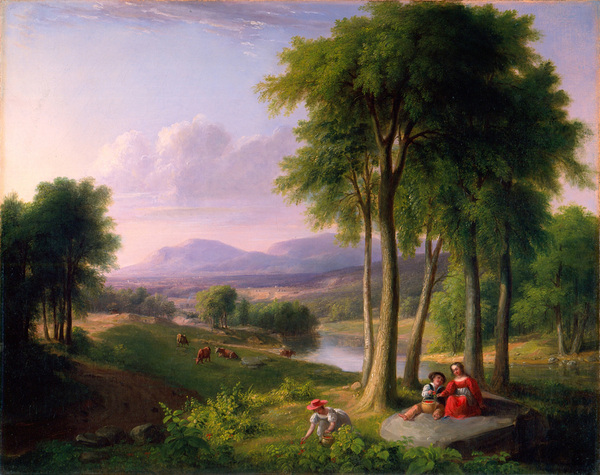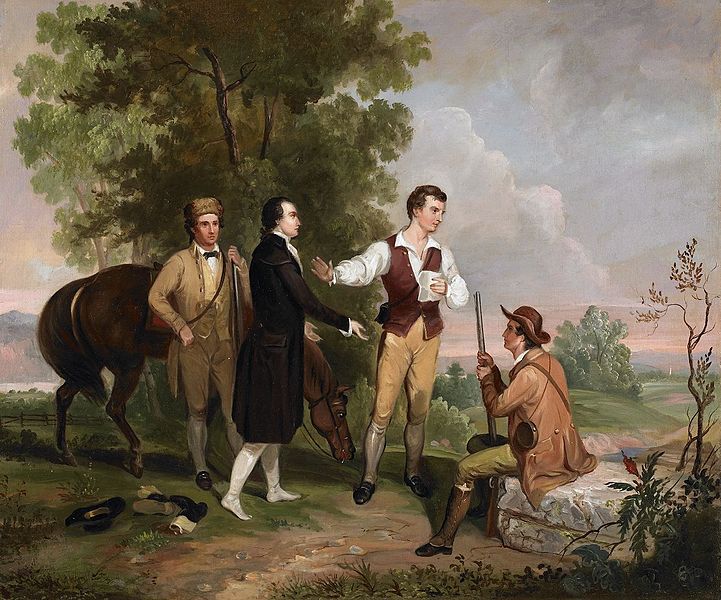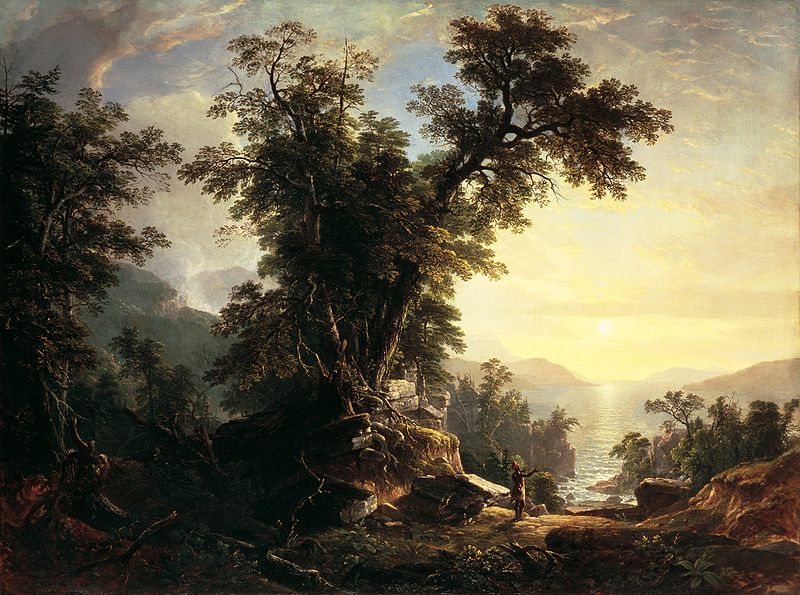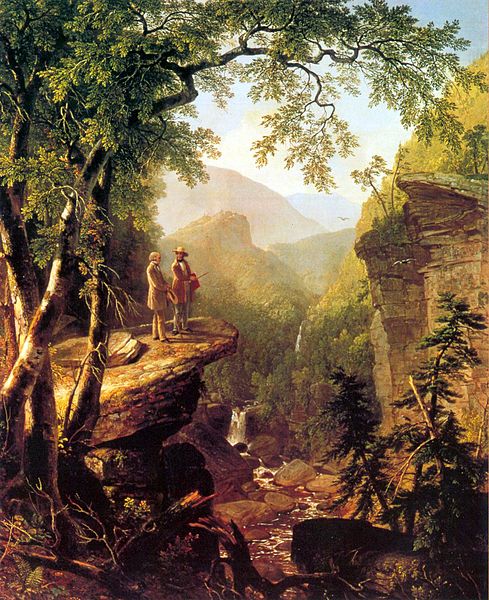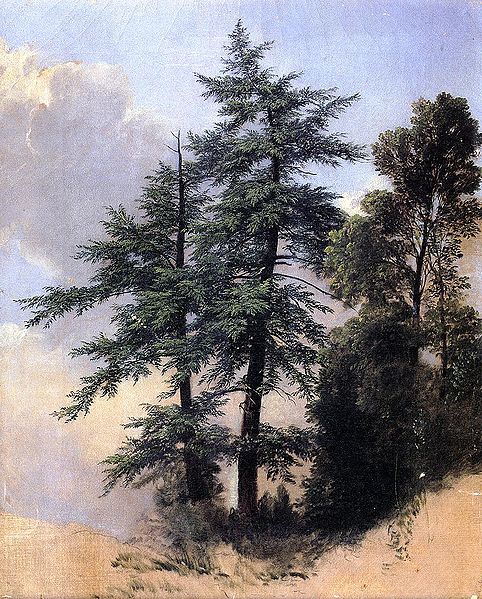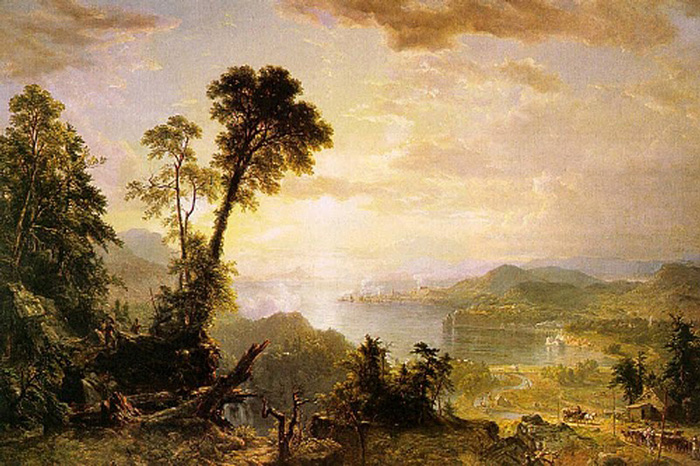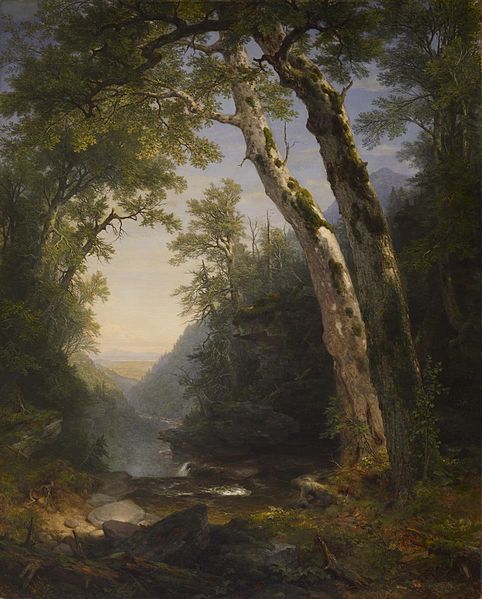<Back to Index>
- Painter Thomas Cole, 1801
- Painter Asher Brown Durand, 1796
PAGE SPONSOR
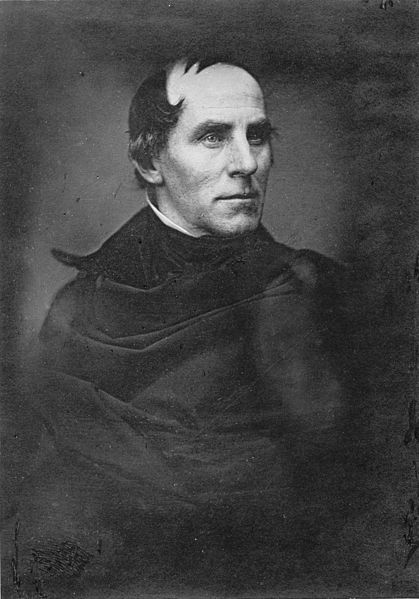
Thomas Cole (February 1, 1801 – February 11, 1848) was an English born American artist. He is regarded as the founder of the Hudson River School, an American art movement that flourished in the mid 19th century. Cole's Hudson River School, as well as his own work, was known for its realistic and detailed portrayal of American landscape and wilderness, which feature themes of romanticism and naturalism.
He was born in Bolton, Lancashire, England, in 1801. In 1818 his family emigrated to the United States, settling in Steubenville, Ohio, where Cole learned the rudiments of his profession from a wandering portrait painter named Stein. However, he had little success painting portraits, and his interest shifted to landscape. Moving to Pittsburgh in 1823 and then to Philadelphia in 1824, where he drew from casts at the Pennsylvania Academy of the Fine Arts, he rejoined his parents and sister in New York City early in 1825.
In New York Cole sold five paintings to George W. Bruen, who financed a summer trip to the Hudson Valley where the artist produced two Views of Coldspring, the Catskill Mountain House, and painted famous Kaaterskill Falls and the ruins of Fort Putnam. Returning to New York, he displayed five landscapes in the window of William Coleman's bookstore; according to the New York Evening Post Two Views of Coldspring were purchased by Mr. A. Seton, who lent them to the American Academy of the Fine Arts annual exhibition in 1826. This garnered Cole the attention of John Trumbull, Asher B. Durand and William Dunlap. Among the paintings was a landscape called "View of Fort Ticonderoga from Gelyna". Trumbull was especially impressed with the work of the young artist and sought him out, bought one of his paintings, and put him into contact with a number of his wealthy friends including Robert Gilmor of Baltimore and Daniel Wadsworth of Hartford, who became important patrons of the artist.
Cole was primarily a painter of landscapes, but he also painted allegorical works. The most famous of these are the five part series, The Course of Empire, which depict the same landscape over generations — from a near state of nature to consummation of empire, and then decline and desolution — now in the collection of the New York Historical Society and the four part The Voyage of Life. There are two versions of the latter, one at the National Gallery in Washington, D.C., the other at the Munson - Williams - Proctor Arts Institute in Utica, New York. Among Cole's other famous works are the Oxbow (1836), the Notch of the White Mountains, Daniel Boone at His cabin at the Great Osage Lake, and Lake with Dead Trees (1825), which is at the Allen Memorial Art Museum. He also painted The Garden of Eden (1828), with lavish detail of Adam and Eve living amid waterfalls, vivid plants and deer.
Cole influenced his artistic peers, especially Asher B. Durand and Frederic Edwin Church, who studied with Cole from 1844 to 1846. Cole spent the years 1829 to 1832 and 1841 to 1842 abroad, mainly in England and Italy.
Thomas Cole is best known for his work as an American landscape artist. However, Cole also produced thousands of sketches of varying subject matter. Over 2,500 of these sketches can be seen at The Detroit Institute of Arts.
In 1842, Cole embarked on a Grand Tour of Europe in an effort to study in the style of the Old Masters and to paint its scenery. Most striking to Cole was Europe's tallest active volcano, Mount Etna (Regarding the title: "Etna" is the more common spelling in the present day, but "Aetna" was a common nineteenth century variant). Cole was so moved by the volcano's beauty that he produced several sketches and at least six paintings of it. The most famous of these works is A View from Mount Etna from Taormina which is a 78 in. x 120 in. oil on canvas. Cole also produced a highly detailed sketch of it, entitled View of Mount Etna which shows a panoramic view of the volcano with the crumbling walls of the ancient Greek theater of Taormina on the far right.
After 1827 Cole maintained a studio at the farm called Cedar Grove in the town of Catskill, New York. He painted a significant portion of his work in this studio. In 1836 he married Maria Bartow of Catskill, a niece of the owner, and became a year round resident. Thomas and Maria had five children:
- Theodore Alexander Cole, born January 1, 1838;
- Mary Bartow Cole, born September 23, 1839;
- Emily Cole, born August 27, 1843;
- Elizabeth Cole, born April 5, 1847 (died in infancy);
- Thomas Cole, Jr., born September 16, 1848.
Thomas Cole died at Catskill on February 11, 1848. The fourth highest peak in the Catskills is named Thomas Cole Mountain in his honor. Cedar Grove, also known as the Thomas Cole House, was declared a National Historic Site in 1999 and is now open to the public.
Cole dabbled in architecture, a not uncommon practice at the time when the profession was not so codified. Cole was an entrant in the design competition held in 1838 to create the Ohio Statehouse in Columbus, Ohio. His entry won third premium, and many contend that the finished building, a composite of the first-, second- and third - place entries, bears a great similarity to Cole's entry.
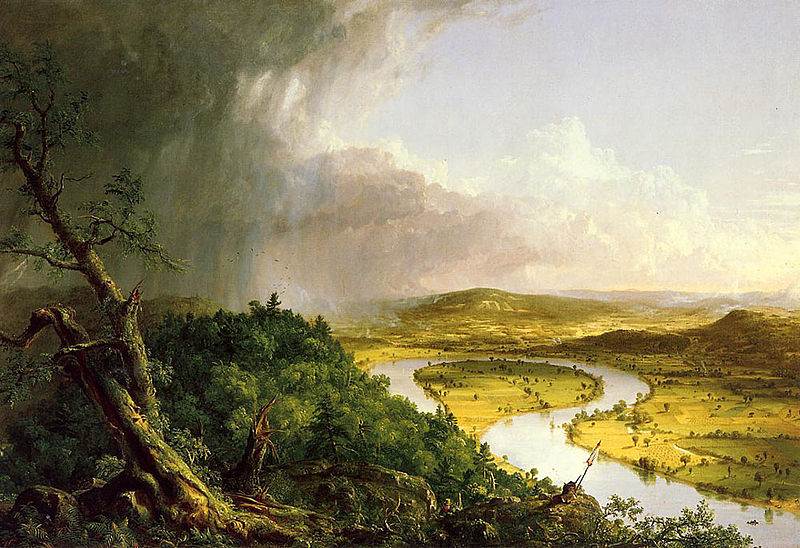
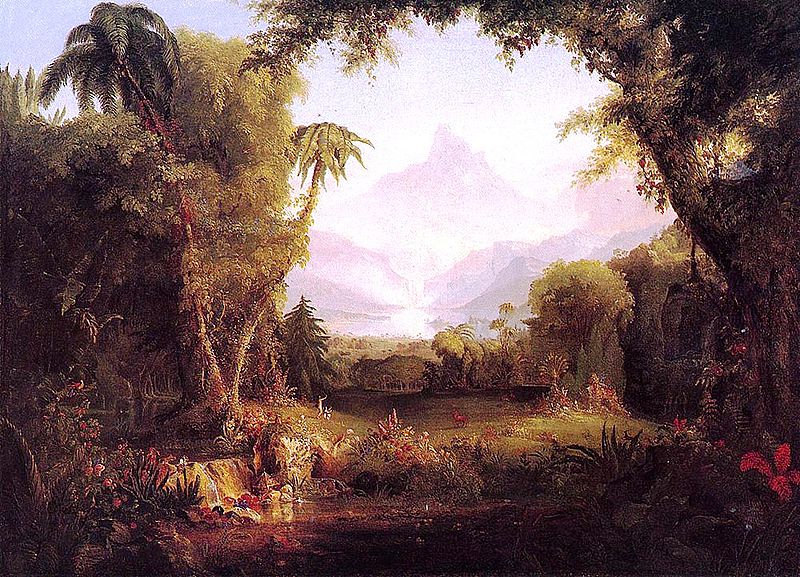
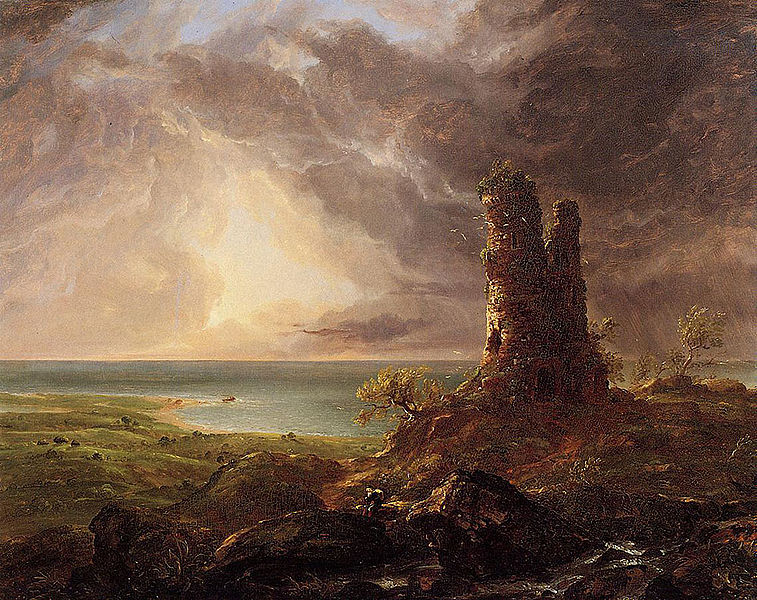
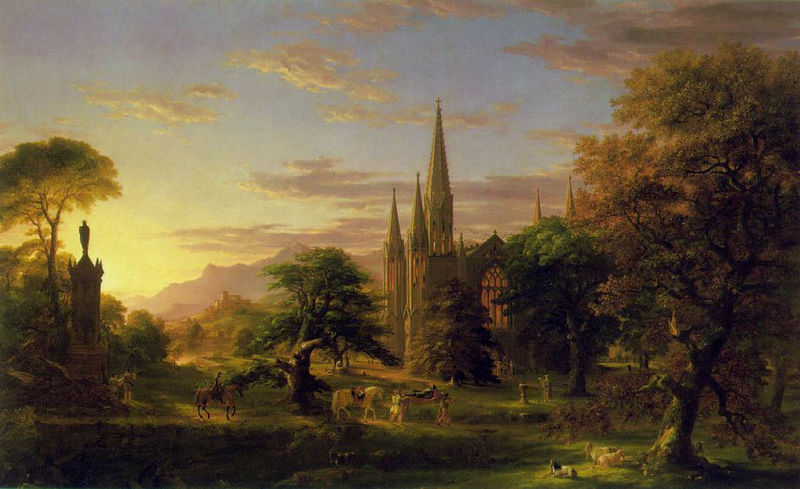
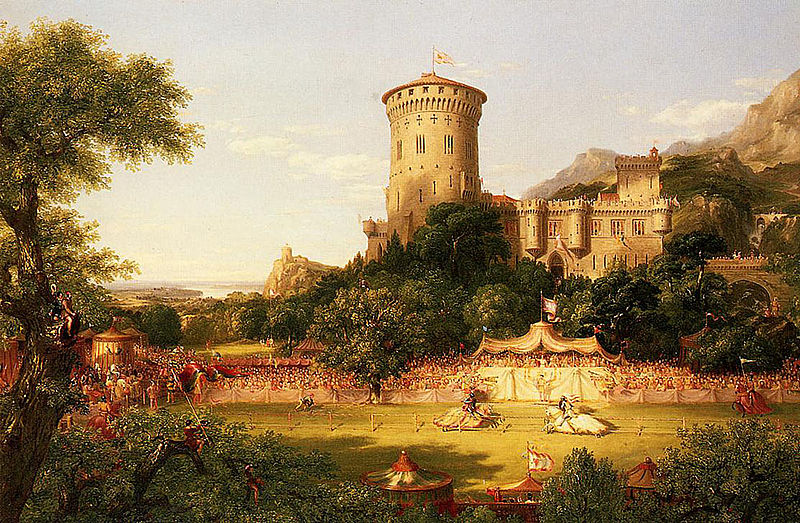
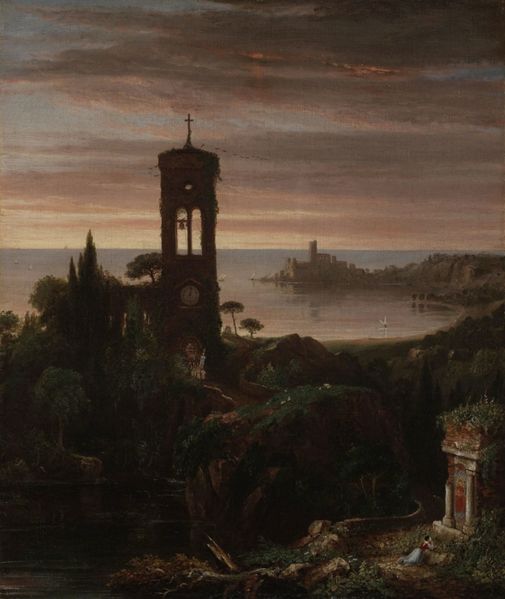
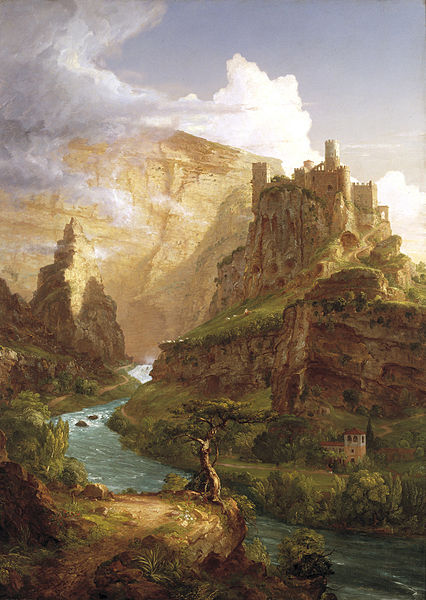
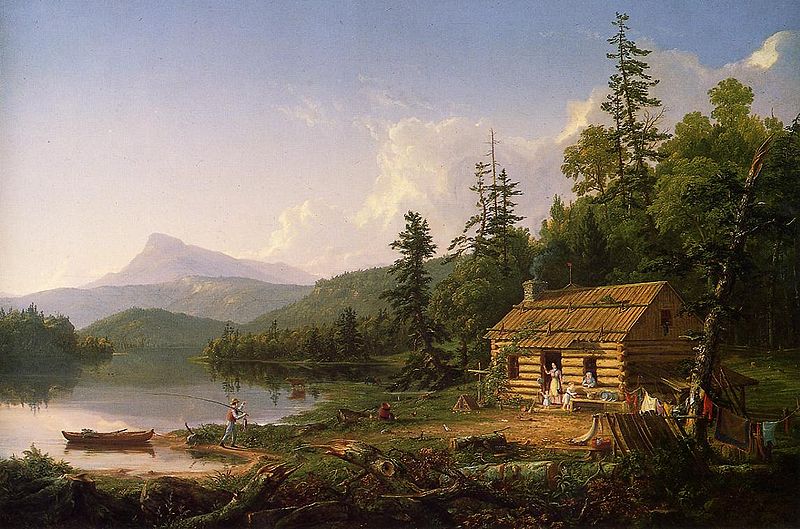
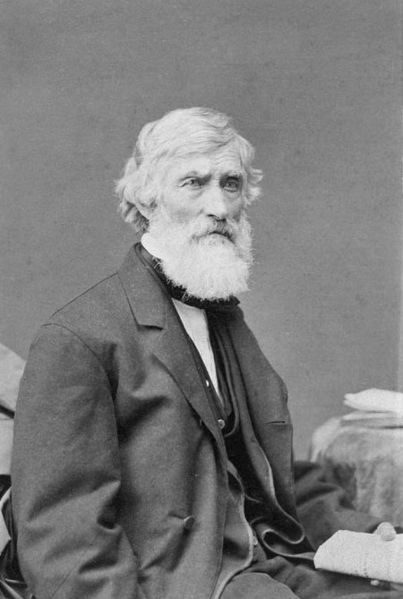
Asher Brown Durand (August 21, 1796 – September 17, 1886) was an American painter of the Hudson River School.
Durand was born in and eventually died in Maplewood, New Jersey (then called Jefferson Village), the eighth of eleven children; his father was a watchmaker and a silversmith.
Durand was apprenticed to an engraver from 1812 to 1817 and later entered into a partnership with the owner of the firm, who asked him to run the firm's New York branch. He engraved Declaration of Independence for John Trumbull in 1823, which established Durand's reputation as one of the country's finest engravers. Durand helped organize the New York Drawing Association in 1825, which would become the National Academy of Design; he would serve the organization as president from 1845 to 1861.
His interest shifted from engraving to oil painting around 1830 with the encouragement of his patron, Luman Reed. In 1837, he accompanied his friend Thomas Cole on a sketching expedition to Schroon Lake in the Adirondacks and soon after he began to concentrate on landscape painting. He spent summers sketching in the Catskills, Adirondacks, and the White Mountains of New Hampshire, making hundreds of drawings and oil sketches that were later incorporated into finished academy pieces which helped to define the Hudson River School.
Durand is particularly remembered for his detailed portrayals of trees, rocks and foliage. He was an advocate for drawing directly from nature with as much realism as possible. Durand wrote, "Let [the artist] scrupulously accept whatever [nature] presents him until he shall, in a degree, have become intimate with her infinity... never let him profane her sacredness by a willful departure from truth."
Like other Hudson River School artists, Durand also believed that nature was an ineffable manifestation of God. He expressed this sentiment and his general views on art in his "Letters on Landscape Painting" in The Crayon, a mid 19th century New York art periodical. Wrote Durand, "[T]he true province of Landscape Art is the representation of the work of God in the visible creation..."
Durand is noted for his 1849 painting Kindred Spirits which shows fellow Hudson River School artist Thomas Cole and poet William Cullen Bryant in a Catskills landscape. This was painted as a tribute to Cole upon his death in 1848. The painting, donated by Bryant's daughter Julia to the New York Public Library in 1904, was sold by the library through Sotheby's at an auction in May 2005 to Alice Walton for a purported $35 million. The sale was conducted as a sealed, first bid auction, so the actual sales price is not known. At $35 million, however, it would be a record price paid for an American painting at the time.
Another of Durand's painting is his 1853 Progress, commissioned by a railroad executive. The landscape depicts America's progress, from a state of nature (on the left, where Native Americans look on), towards the right, where there are roads, telegraph wires, a canal, warehouses, railroads and steamboats.
In 2007, the Brooklyn Museum exhibited nearly sixty of Durand's works in the first monographic exhibition devoted to the painter in more than thirty - five years. The show, entitled "Kindred Spirits: Asher B. Durand and the American Landscape," was on view from March 30 to July 29, 2007.
